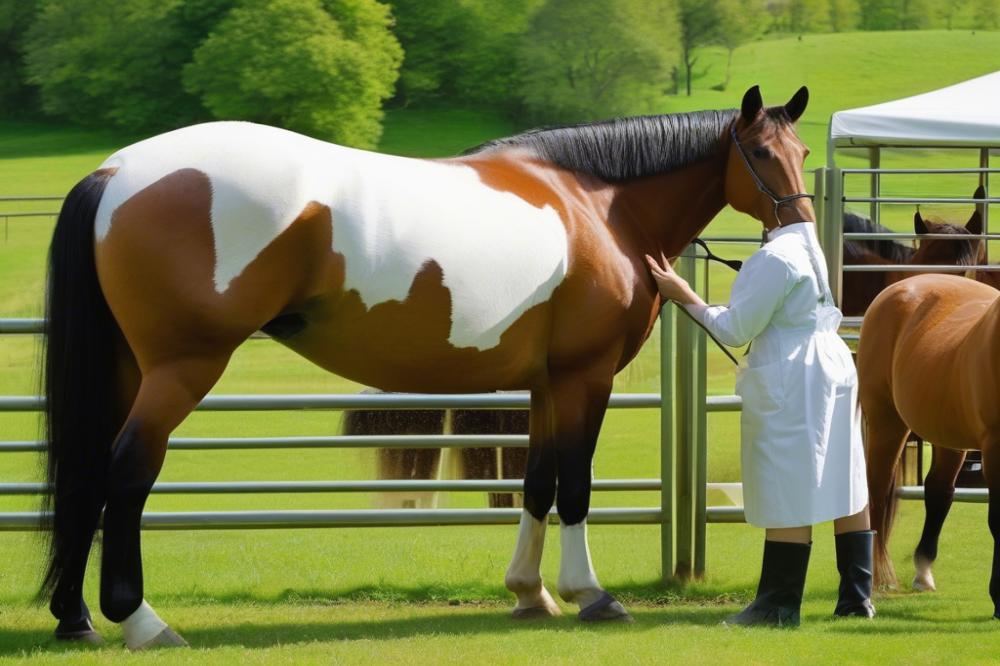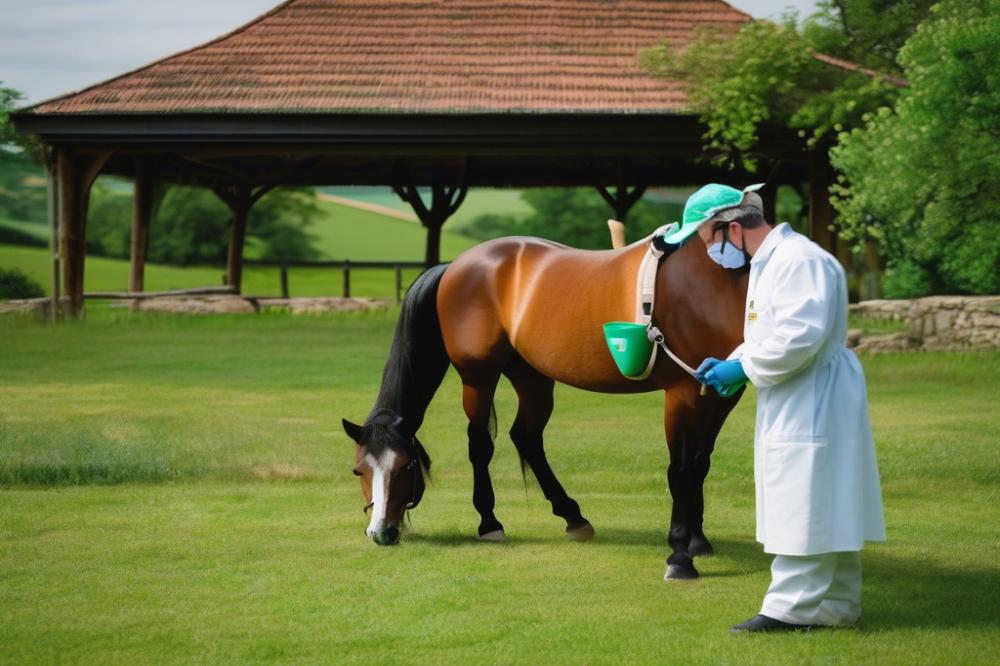Introduction
breeding techniques play a crucial role in enhancing fertility among horses. High fertility rates are essential for effective livestock management. When horses reproduce successfully, it helps in maintaining and improving healthy populations. Without proper breeding methods, animal husbandry faces significant challenges.
Improving fertility rates is not just about having more offspring; it also relates to the overall health of the breeding stock. Healthy animals contribute to a stronger genetic pool, which leads to better quality horses. In turn, better quality animals serve various purposes, from racing to leisure riding. Therefore, understanding and applying the right breeding techniques is necessary.
This article will explore several key concepts related to enhancing fertility rates in horse breeding. Topics will include selective breeding methods, nutritional management, and the role of veterinary medicine. By outlining these areas, we hope to provide valuable insights for horse breeders. Enhanced knowledge in these areas can lead to better outcomes in the long run.
Breeding Techniques

Breeding techniques in horse breeding refer to methods used to increase fertility rates and improve genetic outcomes. Various strategies are involved in this process, mainly focusing on genetics and animal care. Successful breeding aims to produce healthy foals with desirable traits. Understanding these techniques is essential for breeders, owners, and anyone interested in equine genetics.
animal husbandry Practices That Enhance Fertility
Good animal husbandry plays a crucial role in improving horse fertility. Providing a suitable environment is vital. Healthy diets contribute to the overall well-being of breeding horses. Nutritional balance influences reproductive health directly. Regular veterinary check-ups help catch potential issues early. Healthy stallions and mares are more likely to conceive and carry foals to term. Stress management is also important. Reducing anxiety in horses can lead to improved reproductive success. Additionally, proper housing protects horses from harsh weather, ensuring they remain comfortable and healthy.
Selecting Breeding Stock
Selective breeding involves choosing specific animals to reproduce based on certain desirable traits. Breeders focus on qualities like speed, temperament, or stamina. This practice aims to enhance these characteristics in future generations. Traits passed down through generations can lead to superior offspring. Careful selection ensures that only the best candidates contribute to the gene pool. Each breeding choice can have long-lasting effects on the breed’s overall quality. This method of enhancing desirable traits helps meet the demands of various equestrian disciplines, from racing to show jumping.
Artificial Insemination

Artificial insemination is a technique used to breed horses without the need for a natural mating. It involves collecting sperm from a stallion and then introducing it into a mare’s reproductive tract. This method has changed the landscape of horse breeding dramatically over the years. It has made it possible for breeders to use high-quality genetics from stallions located anywhere in the world.
One of the primary benefits of this method is the increased fertility rates. Artificial insemination allows for precise timing, which is crucial for conception. Breeders can monitor the optimal ovulation period and choose the perfect moment to introduce the sperm. This control increases the chances of successful pregnancies. Additionally, it reduces the risks associated with transporting horses for natural mating. Health issues among the animals involved can be minimized with this technique.
There are best practices to follow for a successful artificial insemination procedure. First, a thorough evaluation of the mare’s reproductive health is essential. Veterinarians should conduct examinations to check for any problems. Proper handling of the semen is also vital. It should be collected and processed under sterile conditions to prevent contamination. Maintaining the sperm at the right temperature during transport is crucial, as any fluctuations can impact viability.
Furthermore, understanding the mare’s cycle can greatly enhance results. Accurate tracking of heat cycles will aid in timing insemination effectively. Utilizing ultrasonography can help confirm ovulation and monitor the development of the embryo. After insemination, follow-up examinations are important. They will help determine if the mare has conceived successfully. By adhering to these practices, breeders can maximize their chances of achieving improved fertility rates.
Genetic Diversity and Crossbreeding

Genetic diversity plays a crucial role in sustaining healthy horse populations. When there is a wide range of genes, horses can better adapt to environmental changes and resist diseases. A lack of diversity, however, can lead to inbreeding, which often causes health problems and reduced fertility. Maintaining a healthy mix of genes is essential for the overall vitality of a horse breed.
Crossbreeding serves as a valuable technique to enhance fertility and vigor. This practice involves mating horses from different breeds to create offspring with improved traits. By combining characteristics from multiple breeds, breeders can often produce horses that are not only stronger but also more fertile. Hybrid vigor, a term frequently used in breeding, indicates that crossbred horses tend to perform better than their purebred counterparts in several aspects.
Strategies for Selecting Breeds
Choosing the right breeds is vital for maximizing reproductive outcomes. Breeders should consider the strengths and weaknesses of various breeds. Focus on identifying breeds that are known for robust health and excellent reproductive capabilities. Careful pairing of stallions and mares can yield better offspring. It’s also beneficial to look at the genetic history of prospective parent horses.
Additionally, breeders can use performance data to help inform their choices. Observing traits such as better fertility rates and lower health risks can guide decisions. Selection based on proven performance helps improve the likelihood of successful breeding outcomes. Collaborating with geneticists or using DNA testing can reveal important information about lineage and health risks.
A well-planned breeding program should also incorporate feedback from previous breeding cycles. Keeping track of birth rates and the overall health of offspring adds valuable insights. By analyzing this data, breeders can refine their strategies and continually improve the genetic quality of their horses.
Reproductive Technologies
Advanced reproductive technologies play a vital role in horse breeding. These methods help improve fertility rates, making it easier for breeders to achieve successful outcomes. One of the key techniques used is embryo transfer. This process allows breeders to collect embryos from a mare and transfer them into a surrogate mare. It maximizes the number of foals produced from high-quality mares, which is particularly beneficial when working with valuable genetics.
Cryopreservation is another important technology in this field. This technique involves freezing embryos or sperm for later use. When needed, breeders can thaw these samples and use them to breed horses at their convenience. By having frozen embryos available, breeders have the flexibility to select the most suitable mares for insemination. This leads to better matching of genetics and enhances overall breeding success.
Both embryo transfer and cryopreservation significantly impact fertility enhancement. They provide options for mares that might not be able to carry a foal to term. Moreover, these technologies help ensure that desirable genetic traits can be passed on even if the mare cannot breed naturally. Breeding programs benefit from a higher rate of successful pregnancies, allowing for more efficient planning and resource use.
Overall, the use of advanced technologies in horse breeding helps reshape traditional practices. Breeders now have access to various methods that support their goals. This evolution in breeding science leads to healthier horses and improved genetic diversity within the population. Several options are available, giving breeders the tools they need for better outcomes.
Sustainable Agriculture in Breeding
Connection between sustainable agriculture practices and horse breeding
Sustainable agriculture practices play a vital role in horse breeding. These methods focus on the health of the environment, which impacts animal well-being. By prioritizing soil health, water quality, and biodiversity, breeders can create a better habitat for their horses. Healthy ecosystems often lead to stronger, more fertile animals. Practices such as crop rotation and organic feeding can enhance soil quality. This, in turn, supports the nutritional needs of breeding stock.
Benefits of incorporating sustainable methods into breeding techniques
Breeders who adopt sustainable methods can see numerous benefits. Improved genetics may emerge from a focus on natural selection. Healthier animals usually exhibit higher fertility rates. Additionally, sustainable practices can decrease disease transmission among herds. Lower reliance on chemical fertilizers and pesticides contributes to overall animal health. Moreover, sustainability attracts consumers who value ethical treatment. This shift in consumer preference can elevate the market for responsibly bred horses.
Examples of sustainable breeding programs focused on fertility improvements
Several breeding programs are embracing sustainability to enhance fertility. Some programs prioritize natural mating over artificial insemination. This method often results in healthier offspring and higher conception rates. Regenerative grazing practices can also play a significant role. They allow horses to graze in a rotational manner, improving pasture quality. Alongside this, incorporating native plant species can better support local wildlife. This approach fosters a balanced ecosystem that ultimately benefits horse health and reproduction. Education about sustainable practices is becoming more widespread among breeders, promoting long-term success.
Final Thoughts
In this article, several vital points were discussed regarding techniques that can lead to improved fertility. Effective breeding methods can make a significant difference in livestock production and sustainability. Using selective breeding, farmers can choose animals with desirable traits, which increases fertility rates over time. Each method, from artificial insemination to controlled mating practices, plays a crucial role in enhancing reproductive success.
Implementing sound approaches in animal husbandry is essential. Improved fertility rates not only benefit individual farms but also support the broader agricultural community. A holistic view of breeding can lead to healthier herds and increased productivity. It’s important to monitor progress and adapt methods as needed to achieve the best outcomes.
Readers are encouraged to adopt best practices in their breeding programs. Staying informed about the latest research and techniques can lead to improved success. Engaging with expert resources and collaborating with other breeders can provide additional insights. Every small effort contributes to the overall goal of increased fertility and healthier livestock.
Ultimately, investing time and resources into effective practices will pay off in the long run. A commitment to improvement fosters a better environment for farming. Embracing these strategies will not only enhance personal operations but also contribute to the advancement of agriculture as a whole.



